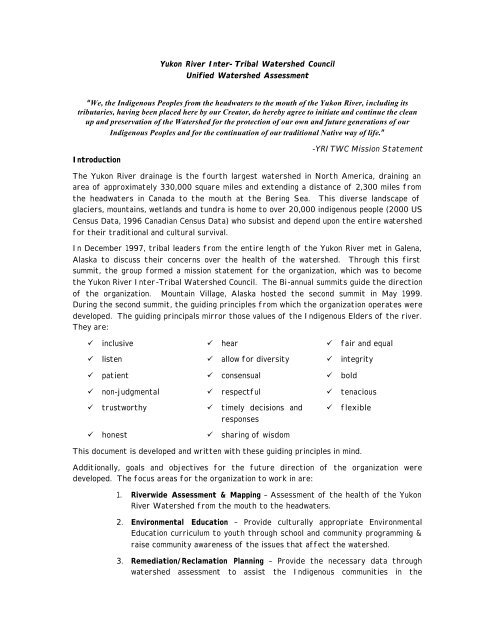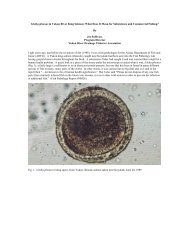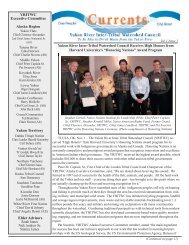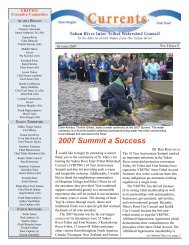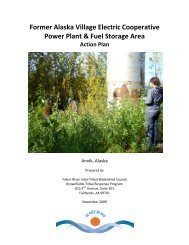Yukon River Unified Watershed Assessment - Yukon River Inter ...
Yukon River Unified Watershed Assessment - Yukon River Inter ...
Yukon River Unified Watershed Assessment - Yukon River Inter ...
Create successful ePaper yourself
Turn your PDF publications into a flip-book with our unique Google optimized e-Paper software.
<strong>Yukon</strong> <strong>River</strong> <strong>Inter</strong>-Tribal <strong>Watershed</strong> Council<br />
<strong>Unified</strong> <strong>Watershed</strong> <strong>Assessment</strong><br />
“We, the Indigenous Peoples from the headwaters to the mouth of the <strong>Yukon</strong> <strong>River</strong>, including its<br />
tributaries, having been placed here by our Creator, do hereby agree to initiate and continue the clean<br />
up and preservation of the <strong>Watershed</strong> for the protection of our own and future generations of our<br />
Indigenous Peoples and for the continuation of our traditional Native way of life.”<br />
Introduction<br />
-YRITWC Mission Statement<br />
The <strong>Yukon</strong> <strong>River</strong> drainage is the fourth largest watershed in North America, draining an<br />
area of approximately 330,000 square miles and extending a distance of 2,300 miles from<br />
the headwaters in Canada to the mouth at the Bering Sea. This diverse landscape of<br />
glaciers, mountains, wetlands and tundra is home to over 20,000 indigenous people (2000 US<br />
Census Data, 1996 Canadian Census Data) who subsist and depend upon the entire watershed<br />
for their traditional and cultural survival.<br />
In December 1997, tribal leaders from the entire length of the <strong>Yukon</strong> <strong>River</strong> met in Galena,<br />
Alaska to discuss their concerns over the health of the watershed. Through this first<br />
summit, the group formed a mission statement for the organization, which was to become<br />
the <strong>Yukon</strong> <strong>River</strong> <strong>Inter</strong>-Tribal <strong>Watershed</strong> Council. The Bi-annual summits guide the direction<br />
of the organization. Mountain Village, Alaska hosted the second summit in May 1999.<br />
During the second summit, the guiding principles from which the organization operates were<br />
developed. The guiding principals mirror those values of the Indigenous Elders of the river.<br />
They are:<br />
� inclusive � hear � fair and equal<br />
� listen � allow for diversity � integrity<br />
� patient � consensual � bold<br />
� non-judgmental � respectful � tenacious<br />
� trustworthy � timely decisions and<br />
responses<br />
� honest � sharing of wisdom<br />
� flexible<br />
This document is developed and written with these guiding principles in mind.<br />
Additionally, goals and objectives for the future direction of the organization were<br />
developed. The focus areas for the organization to work in are:<br />
1. <strong>River</strong>wide <strong>Assessment</strong> & Mapping – <strong>Assessment</strong> of the health of the <strong>Yukon</strong><br />
<strong>River</strong> <strong>Watershed</strong> from the mouth to the headwaters.<br />
2. Environmental Education – Provide culturally appropriate Environmental<br />
Education curriculum to youth through school and community programming &<br />
raise community awareness of the issues that affect the watershed.<br />
3. Remediation/Reclamation Planning – Provide the necessary data through<br />
watershed assessment to assist the Indigenous communities in the


